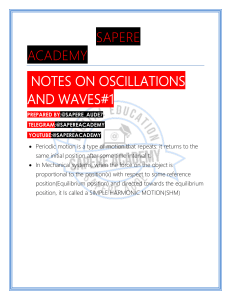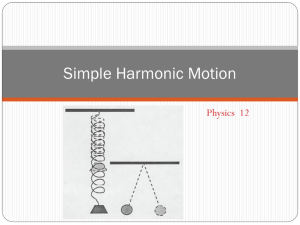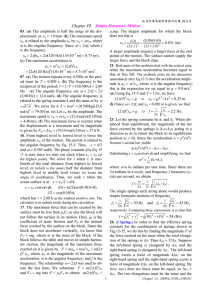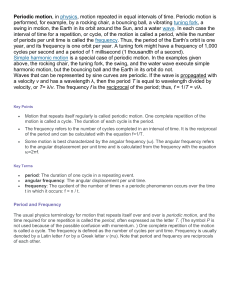Concept Questions with Answers Concept Q.: Simple Harmonic
advertisement
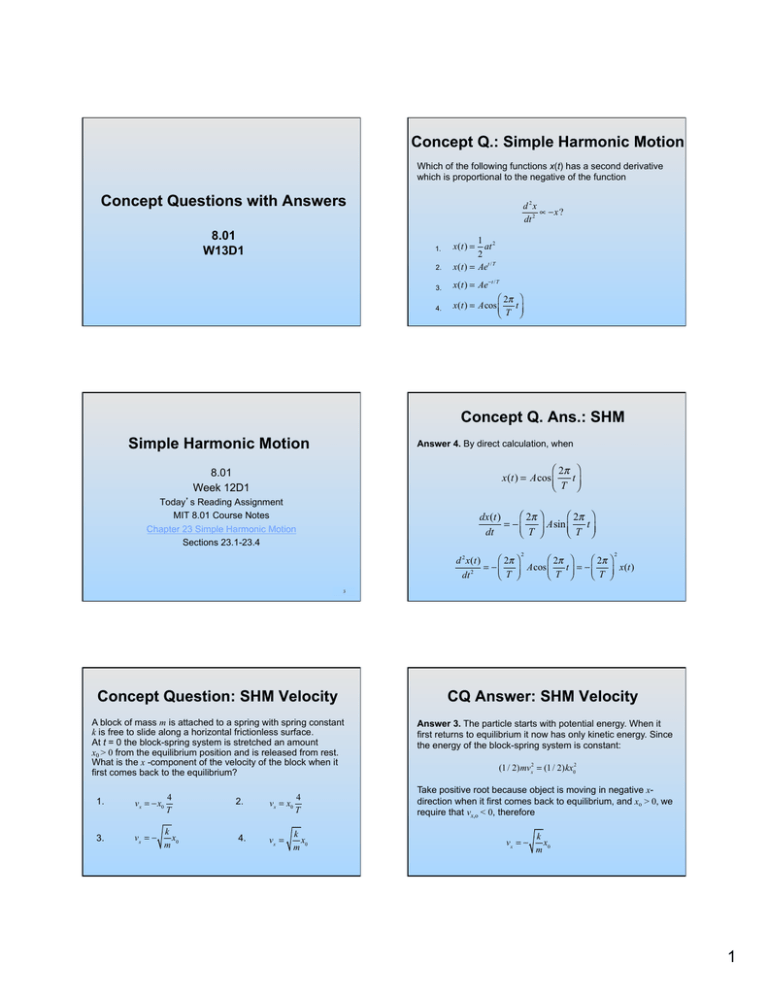
Concept Q.: Simple Harmonic Motion
Which of the following functions x(t) has a second derivative
which is proportional to the negative of the function
Concept Questions with Answers
8.01
W13D1
d 2x
! "x ?
dt 2
1.
2.
3.
4.
1 2
at
2
x(t) = Aet /T
x(t) =
x(t) = Ae!t /T
" 2! %
x(t) = Acos $
t
# T '&
Concept Q. Ans.: SHM
Simple Harmonic Motion
Answer 4. By direct calculation, when
" 2! %
x(t) = Acos $
t
# T '&
8.01
Week 12D1
Today s Reading Assignment
MIT 8.01 Course Notes
Chapter 23 Simple Harmonic Motion
Sections 23.1-23.4
# 2" &
# 2" &
dx(t)
= ! % ( Asin %
t
dt
$ T '
$ T ('
2
2
# 2" &
# 2" &
# 2" &
d 2 x(t)
= ! % ( Acos %
t = ! % ( x(t)
$ T '
$ T ('
$ T '
dt 2
3
Concept Question: SHM Velocity
CQ Answer: SHM Velocity
A block of mass m is attached to a spring with spring constant
k is free to slide along a horizontal frictionless surface.
At t = 0 the block-spring system is stretched an amount
x0 > 0 from the equilibrium position and is released from rest.
What is the x -component of the velocity of the block when it
first comes back to the equilibrium?
Answer 3. The particle starts with potential energy. When it
first returns to equilibrium it now has only kinetic energy. Since
the energy of the block-spring system is constant:
1.
vx = !x0
4
T
2.
vx = x0
4
T
3.
vx = !
k
x
m 0
4.
vx =
k
x
m 0
(1 / 2)mvx2 = (1 / 2)kx02
Take positive root because object is moving in negative xdirection when it first comes back to equilibrium, and xo > 0, we
require that vx,o < 0, therefore
vx = !
k
x
m 0
1
